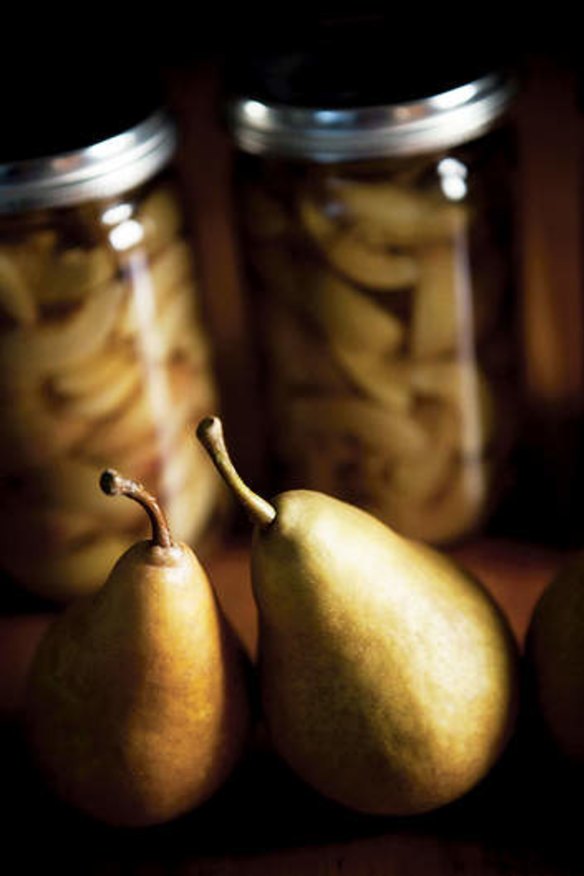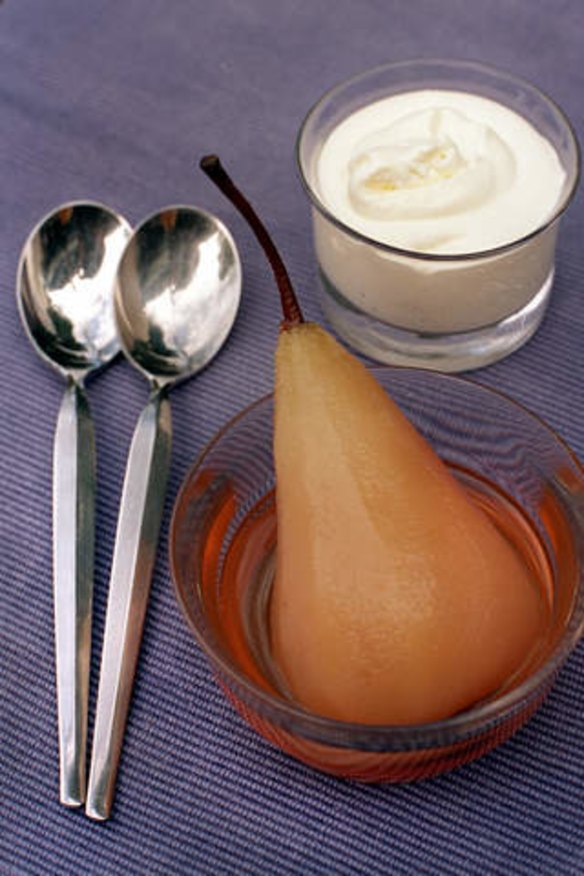Beurre bosc pears are simply sweet

As the mists rise in the early autumn mornings and the colours of the leaves on the trees become rich red and yellow, it is time to pick the late dessert pears. The Farmers' Markets will be brimming with this harvest.
Beurre bosc pears are ripe and ready to be harvested at the beginning of April. The green background on the russet brown has turned to a rich golden colour. The crop is looking good and the pears have grown to a large size, despite the drought in mid-summer.
Some branches are weighed down and I have just been waiting for the golden colour to appear before harvesting.

The clue to the quality of this pear is that the phones have begun to ring as the search for local, quality dessert pears begins. The head chefs of the fine dining restaurants, including Sage and Aubergine, are looking for pears that will present well and be very flavoursome.
Beurre bosc pears are sometimes referred to as the ''aristocrats among pears'' and are very good dessert pears which have been grown in Australia for some time. The elongated shape and graceful look of their long, tapering necks has been the subject of artists over the centuries and it can be a feature of a dessert, either in your home or when you dine out.
The flesh of this pear is dense, crisp, rich and creamy. It is less juicy and firmer than other pears, so it will hold together well when cooked.
When fully ripe the pear has a sweet buttery taste.
After being cooked the beurre bosc will keep its shape and remain quite firm, though somewhat softer than the uncooked pear. This is why it is used in many desserts, especially poached pears, and also used when baking cakes. It is also a good pear to use for crumble.
When you pick these pears, hold the stem and twist gently from the tree. Better still, take a sharp pair of secateurs and cut well up the stem to leave plenty attached to the pear. Hold onto the pear firmly, as it can weigh quite a lot and could slip, fall to the ground and bruise.
This pear will develop its finest flavour when stored at a low temperature for three to four weeks. It can be stored for longer and so is a useful tree to grow, to provide for you through the winter months.
In the early 19th century when this pear was first bred in northern France and southern Belgium, it was given two names as this was the common practice.
The first name needed to describe a quality of the pear, hence the use of the French word for butter in this case.
The second word referred to the propagator, in this case Monsieur Bosc who was the then-director of the Paris Botanical Gardens.
If you ever visit the Palace of Versailles on the outskirts of Paris, take the time to also visit Le Potager du Roi (the King's Garden) in the town. There you can find hundreds of varieties of pears neatly growing in trellis rows (and a couple of hundred apple varieties as well). One other French pear that was propagated at the same time as beurre bosc is the beurre Hardy. I was able to secure five of these trees in 2010 but am still waiting for my first crop.
Poaching pears
This is a wonderful way to cook pears on the stove. It is quite a simple dish but the slow cooking in the syrup enhances all the natural flavours of the pear. Select firm but ripe pears.
4-6 beurre bosc pears
1 litre water
1½ cups raw sugar
1 cinnamon stick
6 whole cloves
2 tbsp lemon juice
Pour the water and sugar into a heavy duty saucepan and heat until the sugar is dissolved. Then add the cinnamon stick, the cloves and the lemon juice.
Peel the pears and slice in half. Remove the cores. If they are large, quarter them. Carefully place the pears into the saucepan and simmer for 20 to 25 minutes, until the pears are well cooked. Remove from heat and allow the pears to cool in the syrup.
The pears can then be served as a dessert with rich ice-cream or King Island cream.
The poached pears in syrup can be stored in the refrigerator for up to four days.
This week, Owen Pidgeon is:
■ Begin planting onion seeds into punnets to ensure a good early start to early-season plantings in the garden.
■ Sow a crop of peas into garden beds that you have just cleared, to produce a winter/early spring harvest.
■ Complete the potato harvest. Dig deeply to collect all the small, chat potatoes so that the garden can be used for a different crop next year. Dry your potatoes well before storing in a cool, dry location, if possible in a jute bag that breathes.
■ As you harvest your late season pears, check for any damage. Poach or stew these pears now as they will not store well.
■ Remove and dispose of dead tomato stalks. They should not be composted as they harbour plant diseases.
■ Continue to prepare a deep, rich bed for planting garlic and seek out supplies of locally grown garlic to use for planting.
>> Owen Pidgeon runs the Loriendale Organic Orchard near Hall.
The best recipes from Australia's leading chefs straight to your inbox.
Sign up